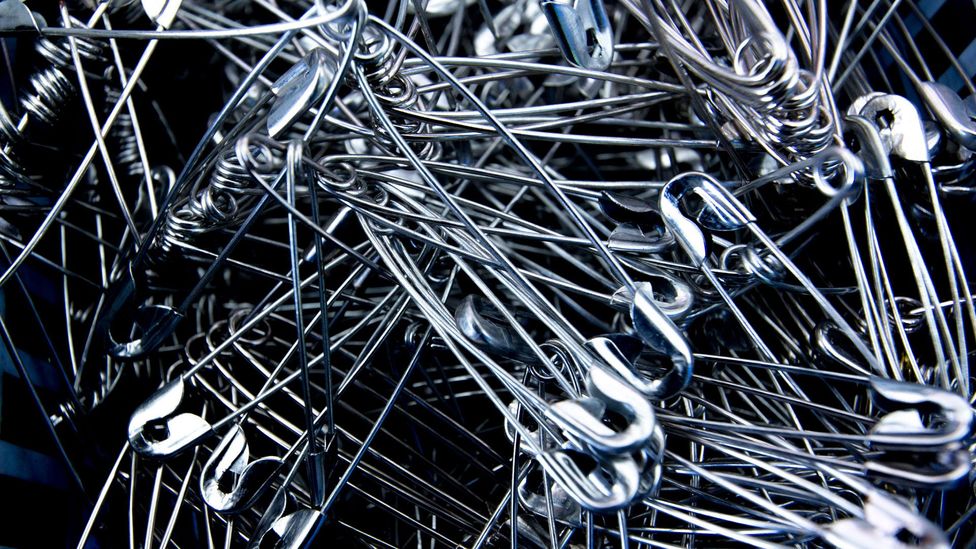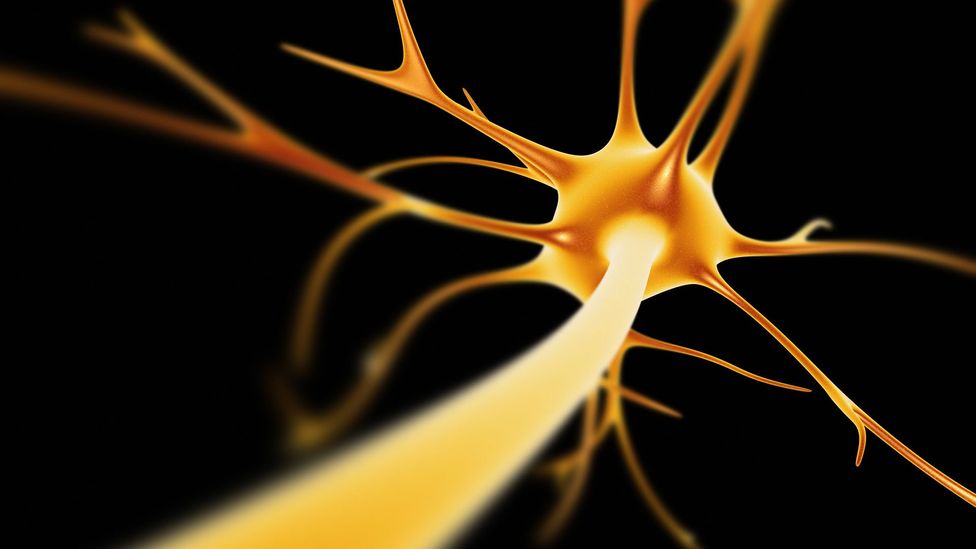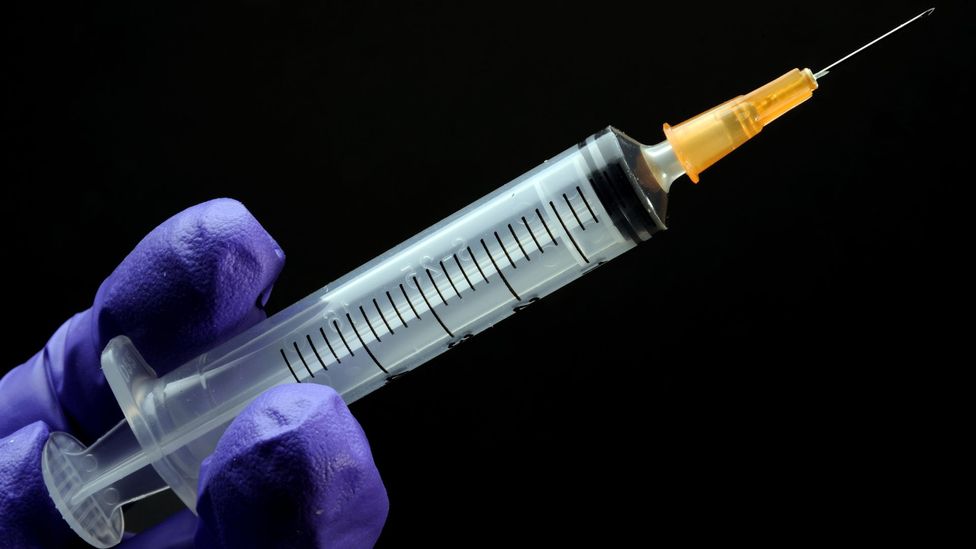Cut You Up Again With the Needles and the Pins
Why practice nosotros get pins and needles?
(Paradigm credit:
Tom Wachtel/Flickr/CC BY 2.0
)

Information technology feels like a g tiny pinpricks – though a few shakes and it's ordinarily all over. What causes the strange sensation? BBC Future investigates.
E
Everyone has experienced that tingling sensation in the hands or anxiety. We telephone call it "pins and needles" because it feels similar someone is gently raking your skin over and over again with hundreds of tiny piffling pointy objects.
Your skin might experience a flake numb, equally if you tin't feel any sensations besides those pins and needles. When your human foot "falls comatose," it can really become a fiddling uncomfortable to place the full weight of your body on it. Non quite painful, but not altogether pleasant either. But if you expect a few minutes and milk shake out your sleepy limb, the sharp piercing nature of the sensation eventually fades away.
The sensation itself is properly referred to as "paresthesia," and the fairly harmless variety described above is quite reasonably known equally "temporary paresthesia." Only what is actually going on underneath your tingling skin? The biological science behind those pins and needles is really quite straightforward.

Putting pressure on limbs constricts blood menstruum, causing the tingling feeling (Credit: Getty Images)
In that location are nerves throughout your body, biological superhighways whose job is to relay information betwixt the brain and the remainder of the body. If you place too much pressure on i of your arms or legs – something that's quite easy to do because ape limbs are long and gangly – you could temporarily pinch the nerves that run through them. Meanwhile, you lot're also putting a little besides much pressure on the blood vessels that supply those nerves, like crimping a garden hose to prevent the flow of water.
This causes your brain to exist deprived of the information it expects from those nerve bundles, and the nerves themselves aren't receiving the oxygenated claret they need from your middle. Then, when that pressure level is relieved, blood floods back into your limb and the nerves begin firing data to and from the encephalon.
A scattering of experiments in the 1930s and 1940s helped researchers to empathise the progression of the sensation. Luckily, it's pretty like shooting fish in a barrel to put a limb to slumber: all you lot demand is a blood pressure gage that's fix to clasp a participant's arm or leg to a higher pressure level than his or her systolic blood pressure level. That's exactly what a pair of Oxford Academy researchers did in 1946.
Starting a minute or two after the pressure was applied, and reliably lasting for three to four minutes, was a sensation that they chosen "pinch tingling". Their participants described information technology as "a faint comfortable soda-water sensation", or as "buzzing," or "a fine light tingle." Some felt every bit if they had "ants running up and down inside the skin."

(Credit: Science Photo Library)
The 2d stage, which usually begins 10 minutes later, was described as a "velvety numbness". That feeling lasts equally long as the pressure on the limb'due south nerve and blood supply remains.
Finally, subsequently the pressure level is released, comes the third stage: this is known every bit "release pricking". That'due south the part usually referred to as "pins and needles." As Oxford physiologist George Gordon noted in Nature in 1948, "the intensity and number of the pricks depend on the length of nervus which is recovering from any fixed period of depressed blood supply…no [item] part of a nerve is particularly concerned in generating the impulses which requite ascent to this form of 'pins and needles'."
Release pricking is typically more than painful than the first two stages, but the emotional aspect of the experience is more than ofttimes described as curiosity or interest. Information technology hurts, simply merely physically. The sensation somewhen subsides, but people are usually unable to pinpoint exactly at what betoken their pare sensations return to normal.
But non all pins and needles are of the temporary diverseness. Chronic paresthesia can occur as part of a multifariousness of neurological disorders or following specially traumatic nervus harm, like a bad burn.
In one report, researchers from Montreal's Hotel-Dieu Infirmary and McGill University worked with 104 burn patients to understand the long-term pain that followed their injuries. Many connected to feel hurting even a year after their handling was completed. After all, intense burns can often involve the destruction of nerves and their receptors, and surgical treatments for those injuries often involve skin grafts, which can also involve impairment to and scarring of nerve cells.

Some people report long-lasting pins and needles afterwards receiving local anaesthetic (Credit: Science Photograph Library)
Nearly two-thirds of patients in the report reported continued tingling on their burn sites, and a quarter of them reported the more than intense pins and needles. "Pain and paresthesias tin can persist for many years afterwards the injury," wrote the researchers in the Journal of Hurting and Symptom Direction. "[They] may be nowadays every day, and can interfere with the patient'southward activities such as work, sleep, and social life." That's much more than the minor trifle that pins and needles stand for for most of us.
Paresthesia tin also occur following the administration of local anaesthetic medications during dental piece of work. While it's a rare event, and it isn't yet clear just why this occurs, at that place are a few possibilities. It could exist that the needle used to evangelize the drug accidentally touches and and so damages a nervus, or it could be that blood haemorrhages into the sheath surrounding the nerve fibre, which increases force per unit area. Alternatively, the injection itself may deliver enough fluids to increase pressure on the nerve, or perhaps the anaesthetic chemical is merely toxic enough to damage nearby neurons.
A 2010 Academy of Toronto study published in the Periodical of the American Dental Association rounded upward data from more than 11,000 "adverse furnishings" reported over a decade to the United states Food and Drug Administration (USFDA) following the employ of one of five kinds of local anaesthetics. Of those who experienced some form of paresthesia, 89% of it occurred in their tongues. Imagine not being able to speak or swallow without feeling an awkward numb, tingling sensation in your tongue. The rest felt it in their lips instead. In one case, the paresthesia lasted for a whopping 736 days after the initial dental handling – that's more than than two years.
And information technology's not but pharmaceutical anaesthetics that can deliver paresthesias to the oral fissure, ranging from mild tingling to painful pricking. Peppers can do it too, thanks to the capsaicin locked away in chillies and peppers that deliver a pleasingly painful punch when delivered in small doses. Szechuan peppers, though, also contain compounds called alkylamides, which evangelize a "tingling pungency," similar to the pinch tingling that precedes pins and needles.

The capsaicin in chillis tin can too cause a feeling similar to pins and needles (Credit: Science Photo Library)
It's such a anticipated effect that in folk medicine, the extracts of Xanthoxylum take been used for anaesthesia. The plants have even become known in some communities as the "toothache tree."
Pins and needles may be an annoying reality for us, but it'southward good to call up that it could be much, much worse. Virtually of us only have to become a little blood flowing and the irritation simply goes away.
Follow uson Facebook , Twitter , Google+ , LinkedIn and Instagram .
Source: https://www.bbc.com/future/article/20151116-why-do-we-get-pins-and-needles
0 Response to "Cut You Up Again With the Needles and the Pins"
Post a Comment